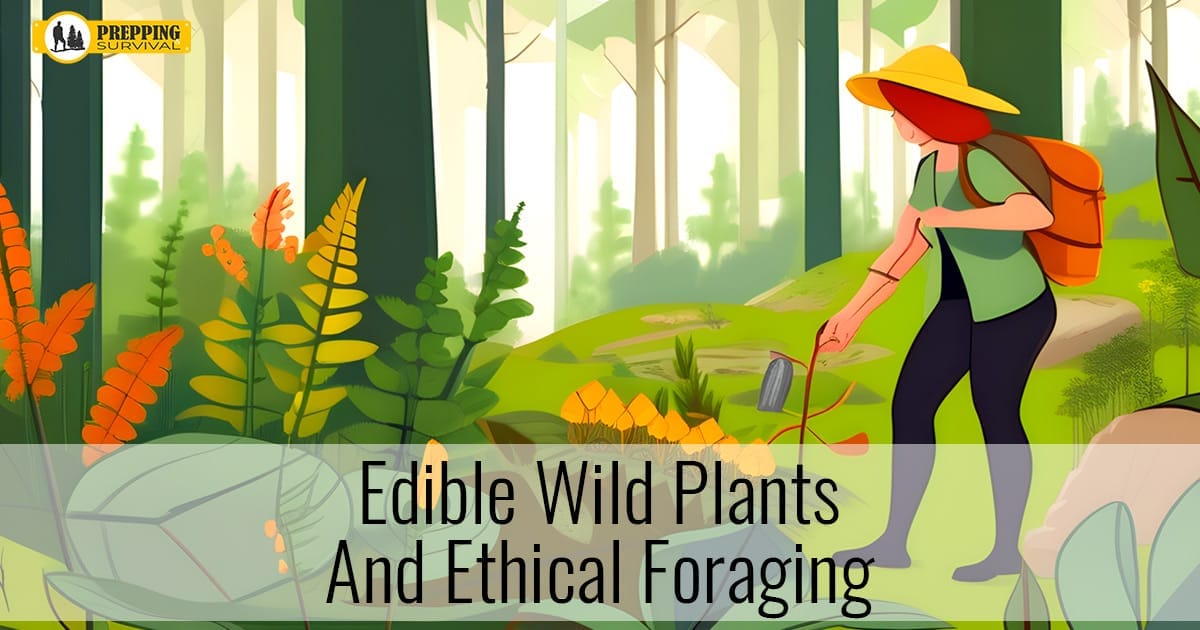Cyber threats aren’t just “out there” anymore—they’re part of everyday life. From fake emails trying to trick you into clicking a link, to criminals locking up a company’s files for ransom, the dangers are real and constant.

Approx reading time: 3 minutes

Embarking on the journey to understand and identify edible wild plants, while at the same time embracing ethical foraging practices, is a pivotal step for survivalists and nature enthusiasts alike. These skills not only offer a path to self-reliance through nature’s bounty but also cultivate a profound bond with the environment. For a prepper, these skills are nothing but invaluable.
Embarking on the journey of foraging for edible plants unlocks a treasure trove of crucial nutrients. Knowing which plants are safe to consume can be a matter of life and death in critical situations. However, it’s paramount that we approach this practice with a deep respect for nature and a commitment to sustainability.
The art of identifying edible wild plants is not one to be taken lightly. It demands a firm foundation of knowledge and often some practical experience. There are many plants out there that may resemble edible ones but are potentially harmful, hence accurate identification is of utmost importance.
Learning from seasoned foragers, tapping into the wealth of information in field guides, and participating in workshops can significantly improve your proficiency in safely identifying edible plants. Some of the common wild edibles are dandelions, found globally and almost entirely edible; wild berries like blackberries and raspberries, easily recognizable and packed with vitamins; and wild nuts such as acorns and walnuts, that may need some processing to be edible.
While the nutritional and medicinal potency of wild plants is noteworthy, ethical foraging practices are crucial to ensure that these resources continue to flourish for future generations and wildlife.
Ethical foraging is mainly about taking only what is necessary, leaving enough for the plant to regenerate and for others to forage. It’s about understanding the delicate balance of the local ecosystem and avoiding overharvesting, which can drain resources and damage the environment.
True ethical foragers respect private property and protected areas, where foraging might be limited to safeguard biodiversity. They take great care to forage in a manner that minimizes their footprint on the plant and its habitat.
This means being careful not to disturb the plant’s root systems and using tools like scissors or knives to cleanly harvest leaves or stems. Sustainable foraging also takes into account the timing of the harvest.
Harvesting during the plant’s peak growth phase can assure the finest nutritional value and taste. But it’s equally important to let plants complete their life cycle, including flowering and seeding, which aids their reproduction and growth in future seasons.
Moreover, ethical foraging is about spreading knowledge and resources within the community, fostering an understanding of local ecosystems, and the significance of preserving them.
Ethical foraging is about being a diligent caretaker of the land, acknowledging that as humans, we are part of the ecosystem, and our actions can either enhance its health and abundance or lead to its depletion and degradation.
Foraging for edible wild plants provides an opportunity to bond with nature, secure food, and gain knowledge about the local environment. However, it requires meticulous study to ensure safety and must be carried out with respect for the ecosystem and future generations.
Ethical foraging practices are not just about taking from nature but giving back by promoting sustainability, conservation, and respect for the natural world.